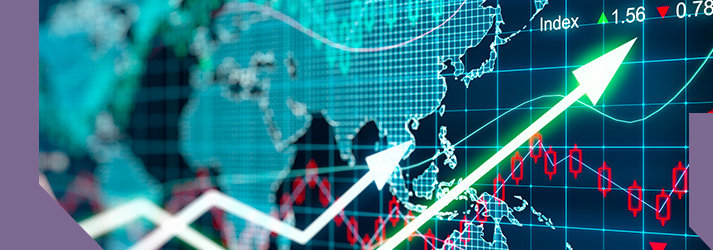December 2017
Emerging equity indices generally ended 2018 in positive territory, with many individual countries outperforming the broader world equity market. Brazil notched up its third consecutive quarter of economic growth between July and September Brazil’s rate of inflation has eased from over 10% in 2016 to around 2.8% for 2017 as a whole, and is forecast to rise to 4% in 2018.
- Brazil’s key Selic interest rate was cut from 7.5% to 7%
- China increased short-term borrowing rates by five basis points
- China’s debt equals 234.5% of total GDP
To view the series of market updates through December, click here
Emerging equity indices generally ended 2018 in positive territory, with many individual countries outperforming the broader world equity market.
“China remains vulnerable to high and rising levels of debt, according to the IMF”
China remains vulnerable to high and rising levels of debt, according to the International Monetary Fund (IMF); the country’s debt now equals 234.5% of total GDP. The IMF warned that China’s principal goals of shoring up local employment and reaching regional growth targets have “conflicted with other policy objectives”, including financial stability, and urged China’s authorities to reduce their focus on high growth, improve regulation, and ensure banks have sufficient capital. Although capital at China’s four leading banks is “adequate”, the IMF warned that large, medium and city-commercial banks appear vulnerable.
Shortly after the US Federal Reserve raised its key interest rate, policymakers at the People’s Bank of China announced an unexpected increase of five basis points in short-term borrowing rates. Although relatively small, this rise represents a bid by China to reduce the amount of money flowing overseas in quest of higher returns. The Shanghai Composite Index edged 0.3% lower during December, but rose by 6.6% over 2017 as a whole.
Brazil’s central bank cut its key Selic interest rate from 7.5% to 7% during the month. Brazil’s rate of inflation has eased from over 10% in 2016 to around 2.8% for 2017 as a whole, and is forecast to rise to 4% in 2018. The Bovespa Index rose by 6.2% over December, and surged by 26.9% during 2017.
The central bank upgraded its forecast for economic growth in Brazil during 2018 from 2.2% to 2.6%, citing “the gradual recovery in economic activity throughout (2017) and the prospects of its continuity in the coming quarters”. Agriculture has been at the vanguard of 2017’s economic expansion, whereas the services sector’s contribution has been relatively subdued, and the manufacturing sector has shrunk. In contrast, activity in the manufacturing and services sectors is expected to pick up in 2018, while agriculture is expected to contract.
Brazil notched up its third consecutive quarter of economic growth between July and September. The country’s economy posted quarterly growth of 0.1% and annualised growth of 1.4%. Nevertheless, Brazil remains vulnerable to political instability as President Temer attempts to implement controversial reforms. Elsewhere in South America, ratings agency Moody’s upgraded its rating on Argentina from “B3” to “B2”, citing progress in reform and an improving economic outlook.
A version of this and other market briefings are available to use in our newsletter builder feature. Click here






